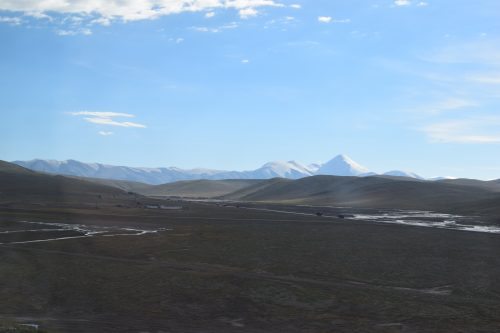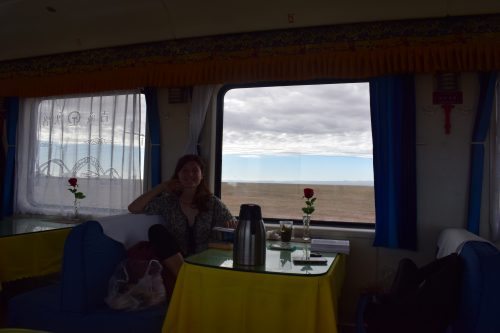The 31st of July 1661, our two brave Jesuits left Xining and head towards Lhasa traveling for three months trough the Tibetan Plateau. This was one of the hardest parts of their trip as the territory from Xining to Lhasa is composed of desolate lands inhabited only by yaks with a highest altitude of 5072 meters!
In fact Gruber states: ” The country on the other side it is so desolate that fields are nowhere to be seen from the town of Sining to the kingdom of Barantola, although a road of three months lies between them. Animals are not found there except a species of big bulls“.
Today this journey of almost 2000km can be undertaken by a 24hrs train ride. The Qinghai railway is an incredible piece of Chinese engineering, 2000 km of tracks but through permafrost, plains, mountains reaching over 5000m and in a region where oxygen pressure is about 35% of that at sea level. This railway is the highest railway in the world!
The train is not pressurised but the carriages are fitted with oxygen outlets that pump supplementary oxygen into the cabins. Personal breathing tubes can be handed to those passengers suffering altitude sickness. In fact after 2000m is common to suffer altitude sickness especially if traveling at high speed without time to acclimatise.
In fact within half an hour our cabin went from a chatty group sharing snacks to a hospital ward on tracks!



Our Jesuits, had more time to acclimatise as they crossed the plateau in three months, however even them report the “thin air” of Tibet. After Lhasa, when heading towards India, they also passed by the Everest which Kircher calls “Langur”. Langur in truth is just the tibetan general word for mountain, whilst the real tibetan name for the Everest mountain is Chomolungma which means “Goddess Mother of the World”.
When crossing by the Everest on foot Gruber states how “even in summer it was dangerous due to the thinness of the air, which hardly let travellers breath“.
At the time however the scientific reason of why it was so hard to breath was not known. In fact people believed, as reported by Gruber, that it was caused by the poisonous exhalations of certain plants.
Also Ippolito Desideri, another jesuit who reached Lhasa around 100 years later, tells of a mountain called Langur which has the special property of giving headaches, shortness of breath, fever and chest pain to anyone who walks by it. Many used to believe that such pains where caused by the gasses of some minerals found in the inside of the mountain.
However both Jesuits, men of great reason and knowledge, where not convinced by this explanation and better believed that the cause was indeed the thinness and sharpness of the air.